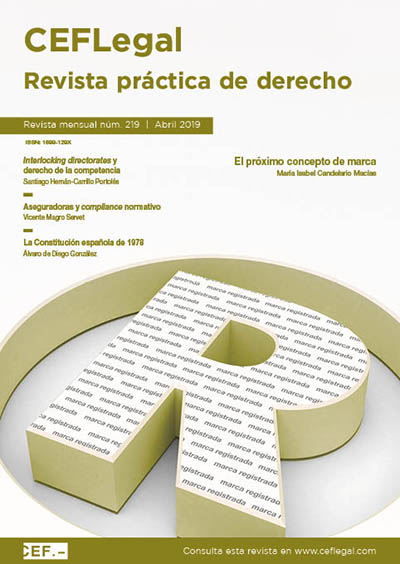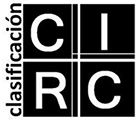Universo corporativo en expansión. Gobierno corporativo, interlocking directorates y su relación con las redes corporativas y el derecho de la competencia
DOI:
https://doi.org/10.51302/ceflegal.2019.9885Palabras clave:
gobierno corporativo, poder corporativo, consejo de administración, interlocking directorates, redes corporativas, derecho de la competenciaResumen
El presente trabajo tiene por objeto analizar ciertos aspectos de los denominados consejeros compartidos o interlocking directorates, miembros de los consejos de administración. Esta figura, tradicionalmente estudiada por la Sociología, puede dar lugar a la existencia de redes corporativas, así como influenciar en el juego de la competencia dentro de los mercados. Se pretende, a nivel general, acotar determinados conceptos sobre esta materia que resulten de utilidad a fin de que la praxis corporativa cumpla con el marco legal y regulatorio.
Descargas
Citas
Aguilera, R. (1998). Director Interlocks in comparative perspective: The case of Spain. European Sociological Review, 14(4).
Buch-Hansen, H. (2014). Interlocking directorates and collusion: An empirical análisis. International Sociology, 29(3).
Agúndez, M. A., Martínez-Simancas, J. y Paz Ares, C. (Coord.). (2009). Cuadernos de Derecho para ingenieros. Gobierno corporativo. Madrid: La Ley.
Cárdenas Herrera, J. (2014). El poder económico mundial. Análisis de interlocking directorates y variedades de capitalismo. Madrid: Centro de Investigaciones Sociológicas.
Cazorla González-Serrano, L. (2013). Presidente Ejecutivo y gobierno corporativo de sociedades cotizadas en España. Pamplona: Civitas - Thomson Reuter.
Chu, J. S. G. y Davis, G. F. (2016). Who killed the inner circle? The collapse of the Amercian Corporate Interlock Network. Recuperado de: http://webuser.bus.umich.edu
Davis, G. F. y Chu, J. S. G. (2013). Who killed the inner circle? The collapse of the American corporate interlock network.
De Andrés, P., Blanco-Alcántara, D. y López de Foronda, Ó. (2014). Los interlocking directorates en España. Evolución, poder y consejeros independientes. Revista Internacional de Sociología (RIS), 72(1), 83-114.
Di Donato, F. y Tiscini, R. (2009). Cross ownership and interlocking directorates between Banks and listed firms: an empirical analysis of the effects on debt leverage and cost of debt in Italian case. Corporate Ownership & Control, 6(3).
Fernández Ordóñez, M. Á. (2000). La competencia. Madrid: Alianza Editorial.
Glattfelder, J. B., Vitali S. y Battiston, S. (2011). The network of global corporate control. Recuperado de http://www.arxiv.org. Cornell University Library, arXiv:1107.5728 v 2 [q-fin-GN].
Heinze, T. (2004). Dynamics in the German system of corporate governance? Empirical findings regarding interlocking directorates. Economy and Society Volume, 33(2), 218-238.
Henisz, W. J. (2014). Corporate Diplomacy. Building reputations and relationships with external stakeholders. UK: Greenleaf Publishing Limited.
Herman, E. S. (1981). Corporate control, corporate power. Cambridge University Press.
Jungmann, C. (2009). The Dualism of One-Tier and Two-Tier Board Systems in Europe. Düsseldorf Law School. Recuperado de https://www.disag.unisi.it
Kissinger, H. (2015). World Order. Penguin Books.
Maassen, G. F. (1999). An International Comparison of Corporate Governance Models. A Study on the Formal Independence and Convergence of One-Tier and Two-Tier Corporate Boards of Directors in the United States of America, the United Kingdom and the Netherlands. Amsterdam. Spencer Stuart Executive Search, Ph.D. Series in General Management, 31. Rotterdam: School of Management.
McMillan, J. (2018). El fin de la Banca. El dinero, el crédito y la Revolución digital. Taurus.
Moavero Milanesi, E. y Winterstein, A. (2002). Minority shareholding, interlocking directorships and the EC Competition rules – Recent Commission practice. Competition Policy Newsletter, 1
Mizruchi, M. S. (1996). What do interlocks do? An analysis, critique, and assessment of research on interlocking directorates. Annual Review Social.
Mizruchi, M. S. (2003). Who controls whom revisited: Managers, Boards of Directors and Corporate governance in large US Firms. University of Michigan.
Opello Jr., W. C. y Rosow, S. J. (1999). The Nation-State a historical introduction to contemporary politics. (2.ª ed.). Lynne Rienner Publishers.
OECD (Organisation for Economic Co-operation and Development. Directorate for financial and enterprise affairs competition committee). (19 de febrero de 2008). Antitrust issues involving minority shareholding and interlocking directorates. Working Party n.º 3 on Co-operation and Enforcement. European Commission.
Pennings, J. M. (1980). Interlocking directorates. Origins and consequences of connections among organizations´ Boards of Directors. San Francisco-Washington-London: Jossey-Bass Publishers.
Petersen, V. (2016). Interlocking directorates in the European Union. An Argument for their restriction. Recuperado de http://nrs.harvard,edu/urn-3:HUL.InstRepos:23519868
Richardson, I. N., Kakadabadse, A. P. y Kakadabadse, N. K. (2011). Bilderberg people. Elite power and Consensus in World affairs. London and New York: Routledge Taylor & Francis Group.
Rothkopf, D. (2012). Power, Inc. The epic rivalry between Big Business and Government and the Reckoning that lies ahead. New York: Farrar, Straus and Giroux.
Santos Castroviejo, I. (2013). La élite del poder económico en España. Un estudio de redes de gobernanza empresarial. Madrid: Maia Ediciones.
Sklair, L. (2002). Democracy and the Transnational Capitalist Class. Annals, AAPSS, 581.
Solomon, J. (2013). Corporate governance and accountability. John Wiley & Sons.
Strange, S. (2015). States and markets. Bloomsbury.
Strange, S. (1996). The retreat of the state. The diffusion of power in the World Economy. Cambridge University Press.
Thepot, F., Hugon, F. y Luinaud, M. (2016).Interlocking Directorate and Anticompetitive risks: An enforcement gap in Europe. Concurrences, 1.
Useem, M. (1984).The Inner Circle. Large corporations and the rise of Business political activity in the U.S. and U.K. New York-Oxford: Oxford University Press.
Wright Mills, C. (1957). La élite del poder (1.ª ed. en español). México: Fondo de Cultura Económica.
Vitali, S., Glattfelder, J .B. y Battiston, S. The network of global corporate control, 2011. Recuperado de https://arxiv.org. Cornell University.















